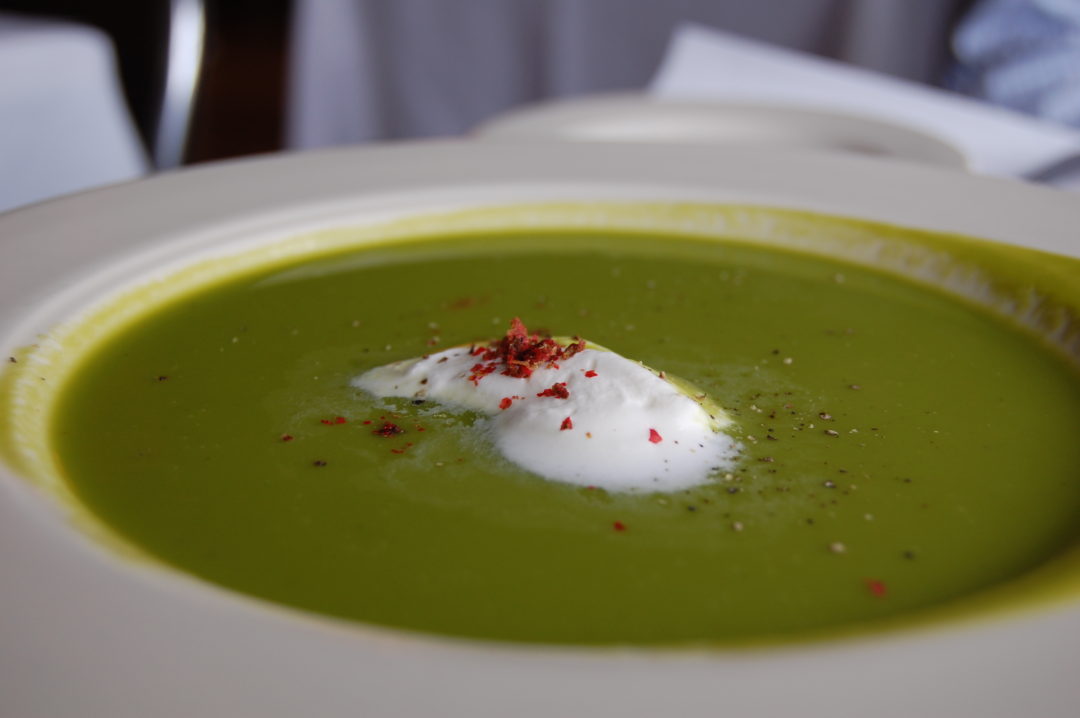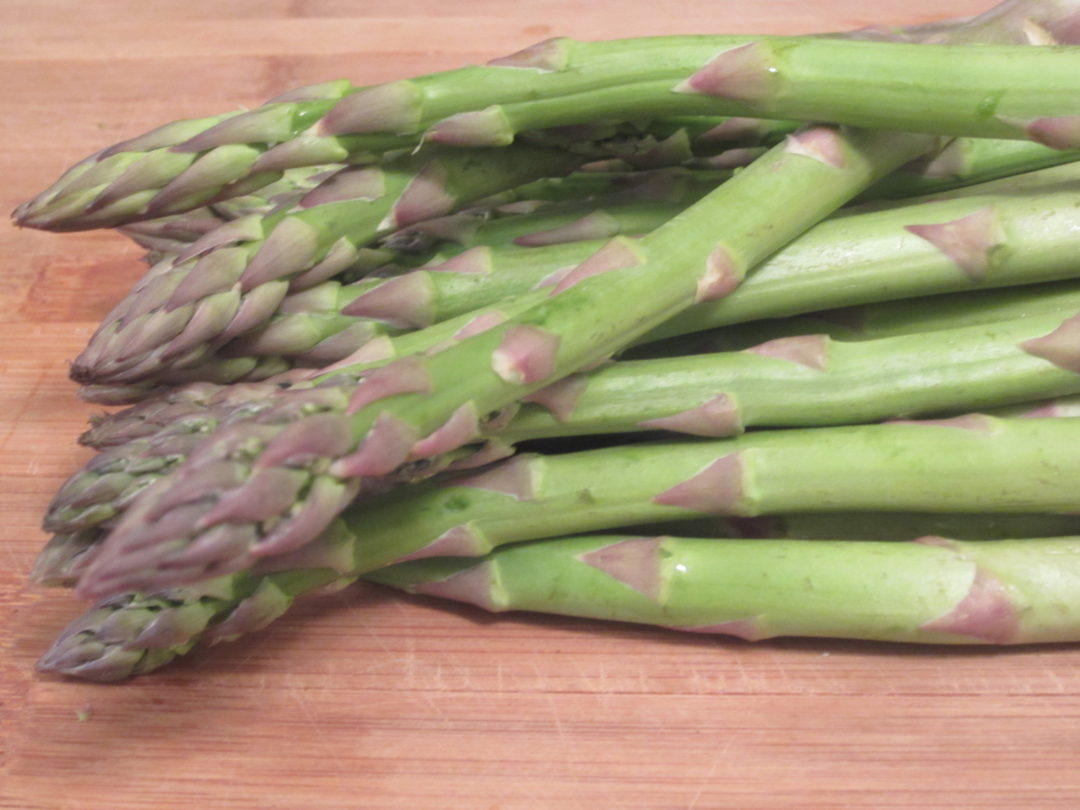I have friends who remark upon the passing of the years by exclaiming how quickly Christmas comes around. Not me, as apart from the fact that I truly loathe turkey, there are more pleasurable milestones throughout the year. For me, the best is the arrival of English asparagus. There is nothing quite like the real English product and I confine my asparagus eating to the eight or so weeks of the year when it hits the markets. Yes, when I am in Italy, I love Italian asparagus and it has a subtly different flavour so the risotto, or whatever I’m making, are also subtly different, but again, I only use it in season. And no, I never use Peruvian or Mexican asparagus that seems to be available all year round. Why would I do that? Why would anyone do that – it just doesn’t have the same depth of flavour.
I do remember years ago (in the 1970s or early 80s I think), I tried a recipe for a quiche that used canned asparagus and evaporated milk. It was foul, what was I thinking; even the dog wouldn’t eat it and Labradors don’t turn up their noses at much. I recently was given a can of asparagus, prior to the season starting, because this well meaning person knew how much of “an asparagus nut” I was. Well, quite. A nut but not idiotic. And yes, it is still foul stuff, still a travesty of the fresh product but OK for my neighbour’s compost heap.
I’ve written elsewhere on this site about how to make real asparagus quiche, soup and risotto so this short post is about how to put together an authentic Italian frittata using asparagus. If you can make an omelette, forget what you know about omelettes. You do see writers who say that a frittata is an Italian omelette and it makes me livid. OK, they are both eggs but the methods are different, not to mention that an omelette is folded or rolled and a frittata is flat. An omelette is made rapidly, keeping the eggs moving and is over in the blink of an eye. I love Margaret Costa’s description in her Four Seasons Cookery Book of being tutored in the art of omelette making by Monsieur Laplanche, then chef des cuisines at the London Savoy; he had been taught as a commis to cook on the back ring of a gas cooker with the naked flame in front of the pan, under his wrist. Don’t try this at home, but it gives you an idea of how rapidly the eggs should be cooked for a French omelette.
So having said all that, for this recipe, forget it all (although I implore you to find a copy of Mrs Costa’s book – it is captivating) as a frittata is approached differently. It is slow cooked and to finish it, you can either flip it like a pancake or whip it under the grill for a brief moment. Because I use a heavy Le Creuset pan for this, I have proven to myself that my wrists are too feeble to flip a frittata so despite what my Italian friends do, I use the grill method, but you do have to watch it like a hawk. I am a massive fail as well when it comes to the “slide in onto a plate and flip it over” method which if you want to attempt, that is what You Tube is for. If it ends up on the floor, don’t blame me.
FRITTATE DI ASPARAGI
Print RecipeIngredients
- 200g fresh English asparagus (a bit more or less won’t matter too much)
- 4 large eggs
- 50g grated Parmesan cheese (no, supermarket “cheddar” won’t do)
- 30g unsalted butter
- salt and freshly milled black pepper
- A heavy based frying pan: I use a Le Creuset with a top diameter of 20 cms
Instructions
Heat your grill
Trim the asparagus and cut into 1 - 1.5 cm pieces, keeping the tips whole
Rinse and blanche in boiling water for 2 minutes
Drain thoroughly, patting gently dry with lots of kitchen paper
Beat the eggs in a bowl (I use a large Pyrex jug) until whites and yolks are well blended
Add the asparagus, cheese, salt and pepper (about 5 twists of the mill)
Melt the butter in the frying pan, over a medium heat
When the butter foams but is not coloured, add the egg mixture
Turn the heat down as low as possible and let the mixture set and thicken
This might take up to about ten or twelve minutes but don’t wander off and read the paper; it needs a close eye kept to prevent browning
When the top is still runny but the very edges look set, whip it under a hot grill for about 30 seconds, but again watch it like a hawk: it must not brown
Loosen the frittata from the pan using a spatula and slide onto a warm plate
Cut into wedges and serve warm, not hot, with a green salad
Notes
The frittata in the picture is a bit less puffy than normal as I only had three eggs. Still tasted good, though. We like to sprinkle a bit more Parmesan over the cooked frittata and they also work cold and travel well for picnics or packed lunches. They can also be adapted to use whatever you have around; I like to use up the ends of whole salami or chorizo, finely sliced red pepper, left over griddled courgettes or small cubes of gorgonzola which melt wonderfully into the eggy mixture. Cold and cut into small cubes, frittate are excellent stuzzichini, too




